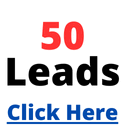Facebook advertising is a golden opportunity for small businesses to scale their operations and reach a broader audience. With over 2.9 billion active users, Facebook provides highly specific targeting tools and cost-effective ad options, making it an essential platform for marketing efforts.
However, success with Facebook ads, meta ads, requires strategy and insight. This guide shares the Top 20 Facebook Advertising Tips for Small Businesses, complete with actionable advice and examples to ensure your campaigns deliver maximum ROI.
Table of Contents
- Why Facebook Advertising Matters for Small Businesses
- Setting Clear Goals for Your Facebook Ads
- Understanding Your Target Audience
- Crafting Compelling Ad Content
- Choosing the Right Facebook Ad Formats
- Using Facebook Business Manager Effectively
- The Importance of A/B Testing
- Budgeting for Facebook Ads
- Optimizing for Mobile
- Leveraging Facebook Pixel for Data-Driven Ads
- Retargeting for Higher Conversions
- Best Practices for Ad Scheduling
- Creating Eye-Catching Visuals
- Writing Persuasive Ad Copy
- Analyzing Your Ad Performance Metrics
- Using Lookalike Audiences to Expand Reach
- Promoting Events and Offers Effectively
- Avoiding Common Facebook Ad Mistakes
- Exploring Advanced Facebook Ad Features
- Staying Updated with Facebook’s Ad Policies
1. Why Facebook Advertising Matters for Small Businesses
Facebook ads offer a unique way to connect with potential customers. For small businesses, it provides:
- Affordable advertising options.
- Access to a massive audience.
- Advanced targeting features.
Example: A local bakery ran a $100 campaign targeting users in their city who love desserts, resulting in a 30% increase in sales.
2. Setting Clear Goals for Your Facebook Ads
Define clear objectives for your campaign, such as:
- Driving website traffic.
- Generating leads.
- Increasing sales.
Pro Tip: Use SMART goals. For instance, “Gain 50 newsletter sign-ups in 30 days.”
3. Understanding Your Target Audience
Know your audience by researching their demographics, interests, and behaviors. Use Facebook Audience Insights for a detailed analysis.
Example: A fitness studio found their best audience was millennials interested in wellness, leading to a 20% increase in memberships.
4. Crafting Compelling Ad Content
Your ad content should:
- Use eye-catching visuals.
- Highlight benefits, not just features.
- Include a strong CTA.
Tip: A boutique used “Limited-Time Offer: 20% Off!” to drive urgency and clicks.
5. Choosing the Right Facebook Ad Formats
Experiment with various ad formats to find what works best:
- Image Ads: Showcase individual products.
- Video Ads: Perfect for storytelling.
- Carousel Ads: Highlight multiple offerings.
- Collection Ads: Create a storefront experience.
6. Using Facebook Business Manager Effectively
Facebook Business Manager helps organize and manage your campaigns. Key features include:
- Centralized management of pages and ad accounts.
- Collaboration tools for teams.
- Integration with Facebook Pixel.
7. The Importance of A/B Testing
A/B testing involves experimenting with different ad components, such as:
- Headline variations.
- Audience targeting.
- Images or videos.
Example: A restaurant tested two images—one of their best-selling burger and another of a drink combo. The burger image performed 40% better.
8. Budgeting for Facebook Ads
Is $20 a day enough for Facebook ads?
Yes! With $20 daily, focus on:
- Awareness campaigns.
- Retargeting.
- Testing new creatives.
9. Optimizing for Mobile
More than 90% of Facebook users access it via mobile. Ensure:
- Mobile-friendly visuals and copy.
- Fast-loading landing pages.
10. Leveraging Facebook Pixel for Data-Driven Ads
Facebook Pixel helps track user actions on your website, enabling you to:
- Retarget visitors.
- Measure ROI.
- Create custom audiences.
11. Retargeting for Higher Conversions
Retargeting helps you re-engage users who interacted with your site or ads. Use retargeting to:
- Show ads to cart abandoners.
- Re-engage past customers.
Example: A clothing store retargeted visitors with a 10% discount, recovering 30% of lost sales.
12. Best Practices for Ad Scheduling
Schedule ads based on when your audience is most active. Use Facebook’s insights to analyze peak engagement times.
13. Creating Eye-Catching Visuals
Invest in high-quality visuals. Ensure they:
- Align with your brand.
- Feature vibrant colors.
- Use minimal text.
14. Writing Persuasive Ad Copy
Your copy should:
- Speak directly to the audience’s pain points.
- Use an active voice.
- Highlight benefits.
15. Analyzing Your Ad Performance Metrics
Track key metrics like:
- Click-through rate (CTR).
- Cost per click (CPC).
- Conversion rates.
Use these insights to refine your strategy.
16. Using Lookalike Audiences to Expand Reach
Lookalike audiences help you reach users similar to your existing customers.
Example: A flower shop used lookalike audiences to expand its delivery service and saw a 50% increase in new orders.
17. Promoting Events and Offers Effectively
Create event-specific ads. Highlight details like dates, times, and incentives to encourage attendance.
18. Avoiding Common Facebook Ad Mistakes
Steer clear of:
- Using vague CTAs.
- Ignoring performance data.
- Neglecting audience research.
19. Exploring Advanced Facebook Ad Features
Use advanced tools like:
- Dynamic Ads: Showcase products tailored to users.
- Automated Rules: Simplify campaign management.
20. Staying Updated with Facebook’s Ad Policies
Regularly review Facebook’s advertising guidelines to avoid disapproved ads. Stay compliant and ensure your ads meet their standards.
Pros and Cons of Facebook Advertising
Pros:
- Affordable for small budgets.
- Advanced targeting capabilities.
- Highly measurable.
Cons:
- Requires time to optimize.
- Steep learning curve for beginners.
Conclusion
By following these Top 20 Facebook Advertising Tips for Small Businesses, you can craft campaigns that deliver impressive results. Whether you're a local café, a boutique, or a service provider, these tips help you make the most of Facebook's powerful advertising tools. Start small, test continuously, and scale up as you learn what works for your business.
Additional Resources
For further learning, visit this detailed blog post: Beginner’s Guide to Facebook Ads by WordStream.




